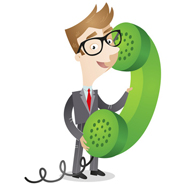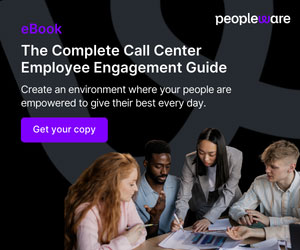Ken Reid argues that the traditional phone is still the most cost-effective way to resolve a customer issue.
Customers now expect to be able to choose how they communicate with contact centres, and are even switching between channels such as phone, email, text message, chat and social media to discuss a single requirement.
Service advisors therefore need systems that allow them to see a customer’s messages across all these channels in one place, along with that person’s profile and history, in order to efficiently meet their requirements.
Providing a high level of customer service has to be balanced with the cost
But providing a high level of customer service has to be balanced with the cost to the business. So thought should be given to how the customer service advisor should respond to multichannel communications. For example, did you know that, perhaps surprisingly, a phone call is usually the most cost-effective way to reply?
Email conversations can be time-consuming and open to misinterpretation; tweets may become difficult in a public environment; it can be tricky to verify the identity of a web chat caller; text messages need to be linked to the Customer Relationship Management System…
A phone call is a quicker and easier way to respond
A phone call is a quicker way to respond and it’s easier to get to the main issue fast and deal with it. But this brings another vital issue to address: Is your operation equipped to handle these contacts properly ?
The customer service advisor might be equipped with an intuitive system that shows them the full customer history across all channels. But if they are too busy to respond and queues are building then the contact centre will still be failing in its aims.
Rostrvm research has shown that even in contact centres that regard themselves as primarily inbound, 40% of all contacts are actually outbound; such as when returning calls and responding to emails.
A way to get round this is to have an outbound dialler fielding calls
A way to get round this is to have an outbound dialler fielding calls. This will ensure that vital customer promises, such as the agreement to call back, aren’t forgotten or don’t take too long to be done. Call-backs can either be set up automatically by redial rules or by the agents in the contact centre during an inbound or outbound call.

Ken Reid
Having an effective compliant dialler will prevent customers having to contact the centre to follow things up. With precision dialling technology, requests for contact such as emails, tweets and chats can be fed into the dialler to deliver a fast, personal response to customers. SMS (text message, web, social and email contact can also be blended with outbound dialling campaigns.
Once the right system is set up, the contact centre will work more seamlessly and customers will be likely to stay around to appreciate the improvement.
Ken Reid, Director of Proposition and Product at Rostrvm Solutions
Author: Megan Jones
Published On: 2nd Apr 2014 - Last modified: 14th Jun 2024
Read more about - Archived Content, Ken Reid, Rostrvm








Phone calls are proving to be the effective medium for communication as one could reach the end user in less time and could take up a live interaction. Direct conversations can help to bring about clear understanding and negotiations. They are said to be the most cost-effective medium too compared to other ways of communications.